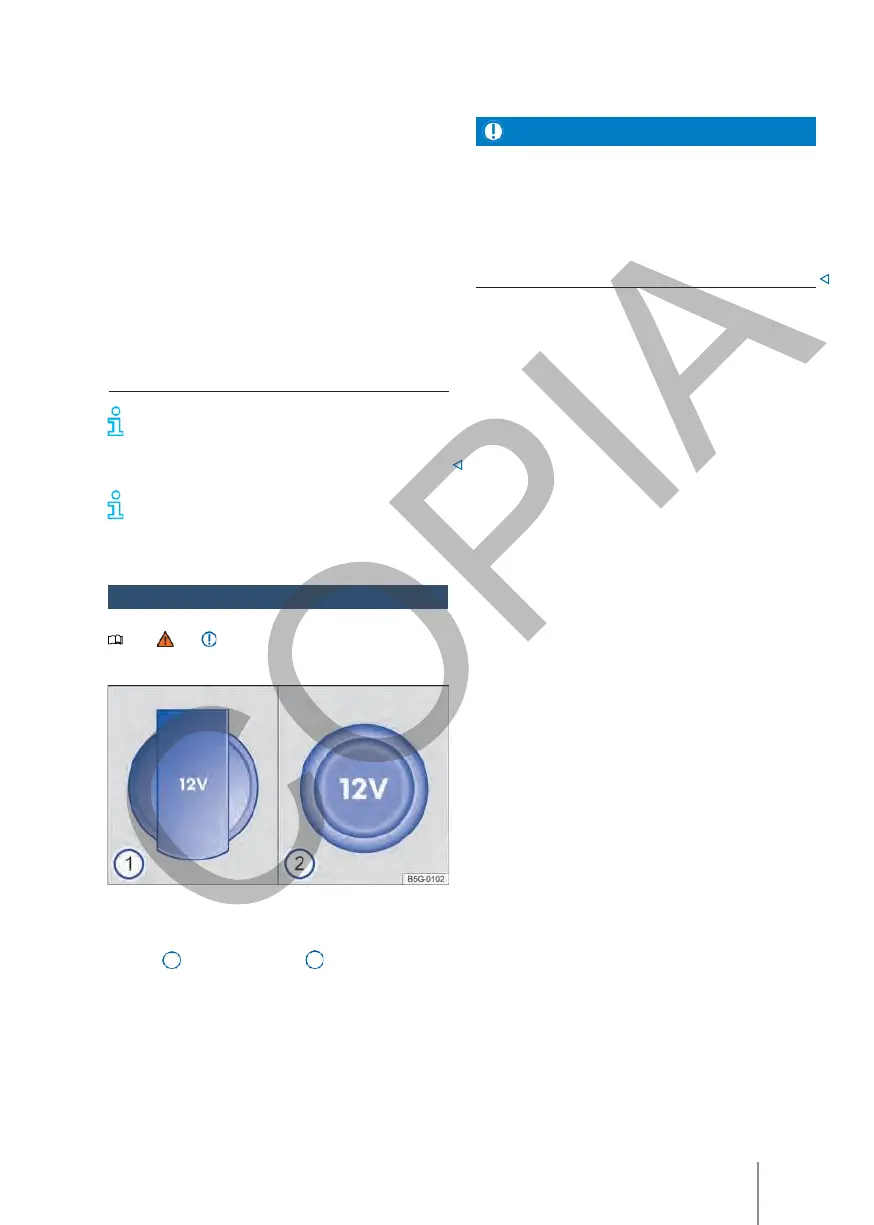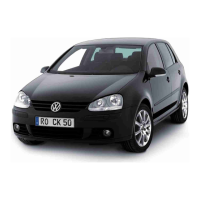such as solar panels or battery chargers, to
charge the 12-volt battery.
•
Use only electrical devices that comply with the
applicable EMC directives.
•
To prevent voltage fluctuations from causing
damage, switch off electrical devices before
switching the power on and off.
and to start the engine.
•
Never connect electrical devices that consume
more power than specified to a 12-volt socket.
If the power rating is exceeded, do not connect
any electrical devices that consume more than
the rated power.
If the maximum power output is exceeded, the
vehicle's electrical system could be damaged.
•
Observe the operating instructions for
electrical devices!
The 12-volt battery discharges when
electrical devices are switched on.
with the engine switched off and the ignition
switched on.
Uninsulated devices can cause interference
to the radio, infotainment system and vehicle
electronics.
The maximum output of each 12-volt socket is 180
watts in total with the engine running.
If the 12-volt socket is used at maximum power
for longer than the specified time, the fuse may
blow.
•
Never use the 12-volt socket at full power for
more than 10 minutes.
•
In case of maximum power, use only one 12
volt power supply.
Power sockets in the vehicle
Note and at the beginning of this
chapter
on page 166.
Fig. 136 In the lower part of the centre console and in
the luggage compartment: 12-volt power socket with
lid
foldable or with removable cover 2 .
Make sure that the maximum power of the sockets
is not exceeded. The power consumption of the
devices can be found on the type plate of the
devices.
The continuous output of all 12-volt sockets in the
vehicle is 120 watts in total.
→ p. 166.

